Protein 500 mg (per 100 g) Rank Species | Genus Mammea Potassium 47 mg (per 100 g) Higher classification Mammea | |
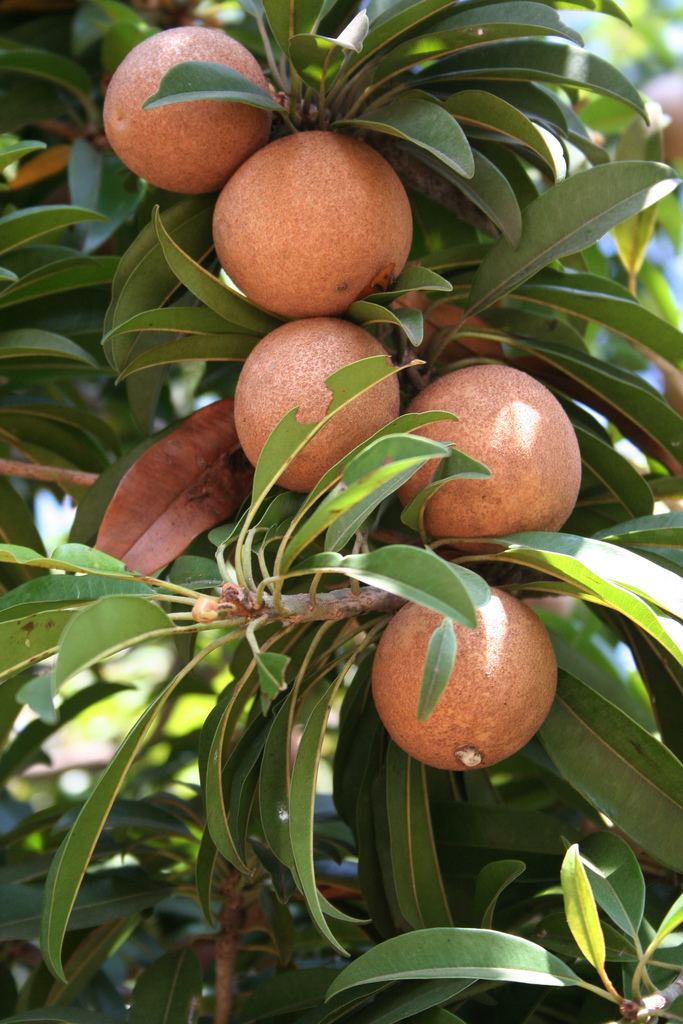 | ||
Energy 50.91 Calories (per 100 g) Similar Mammea, Mamey Sapote, Pouteria, Clusiaceae, Platonia | ||
Mammea americana abrico tree
Mammea americana, commonly known as mammee, mammee apple, mamey, mamey apple, Santo Domingo apricot, tropical apricot, or South American apricot, is an evergreen tree of the family Calophyllaceae, whose fruit is edible. It has also been classified as belonging to the family Guttiferae , which would make it a relative of the mangosteen
Contents
- Mammea americana abrico tree
- Cultivo del mamey amarillo mammea americana
- Tree
- Fruit
- Propagation
- Distribution and habitat
- Traditional medicine
- Culinary interest
- Other
- References
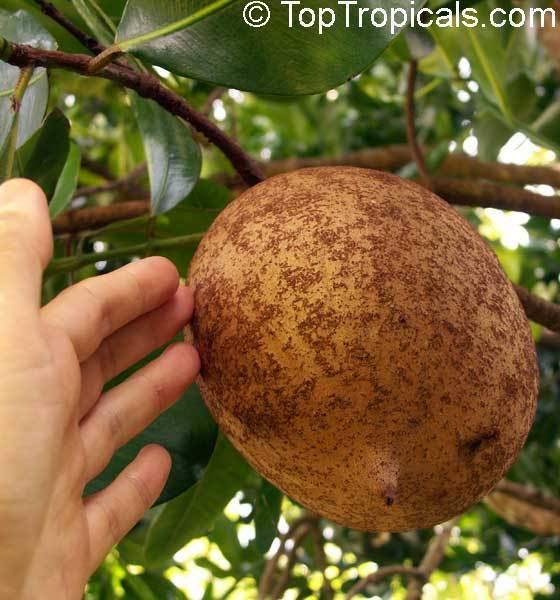
In certain Latin American countries Mammea americana is referred to as "yellow mamey" (Spanish: Mamey amarillo) in order to distinguish it from the unrelated but similar looking Pouteria sapota, whose fruit is usually called "red mamey" (Spanish: Mamey colorado or Mamey rojo).
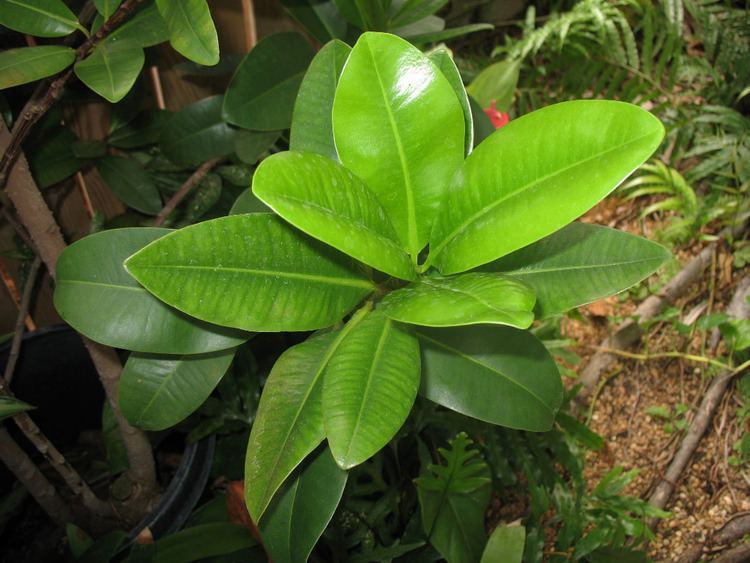
Cultivo del mamey amarillo mammea americana
Tree
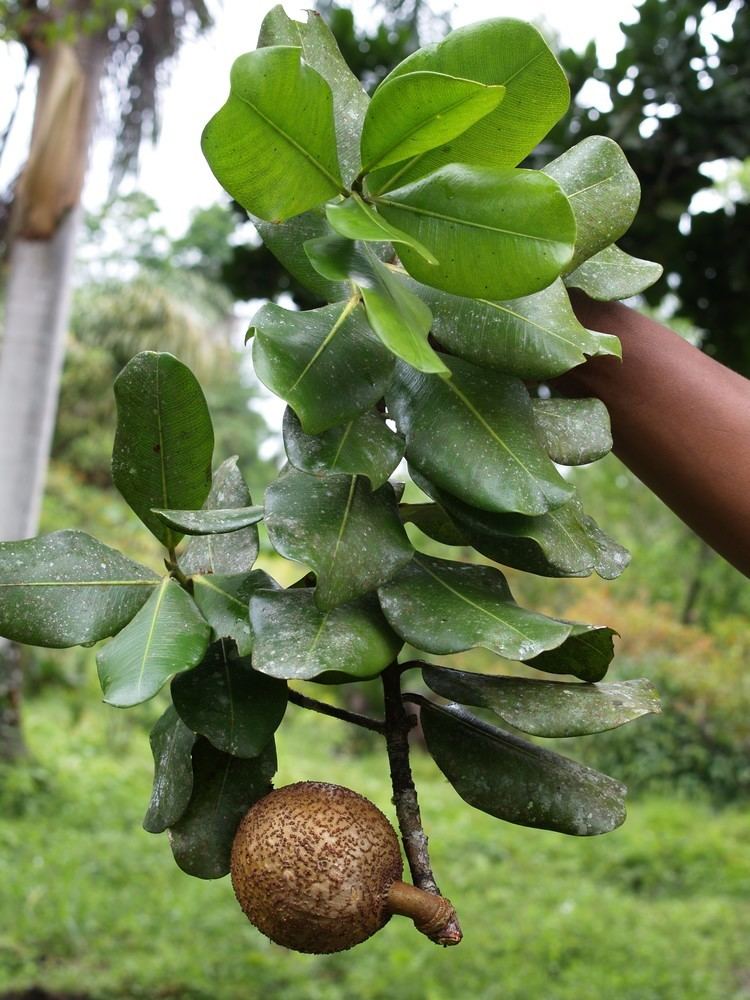
The mammee tree is 18 m (59 ft) – 21 m (69 ft) high and is similar in appearance to the southern magnolia (Magnolia grandiflora). Its trunk is short and reaches 1.9 m (6 ft 3 in) - 1.2 m (3 ft 11 in) in diameter. The tree's upright branches form an oval head. Its dark-green foliage is quite dense, with opposite, leathery, elliptic leaves. The leaves can reach 10 cm (3.9 in) wide and twice as long.
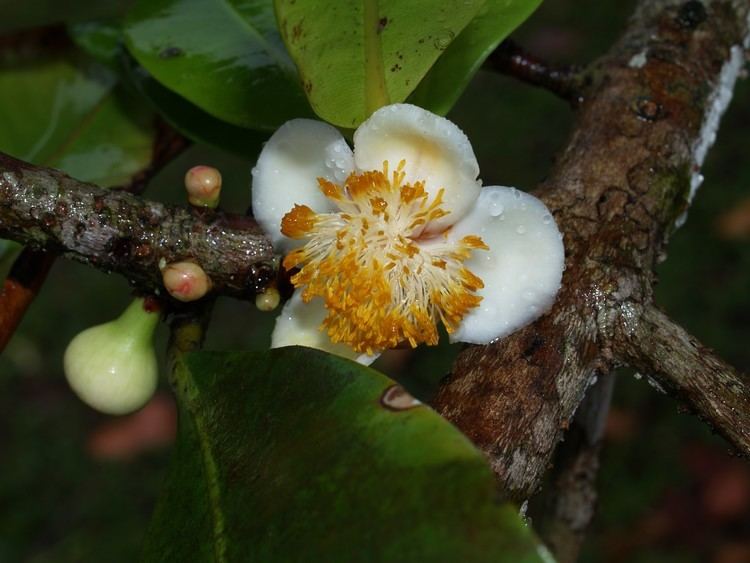
The mammee flower is fragrant, has 4 or 6 white petals, and reaches 2.5 cm (0.98 in) – 4 cm (1.6 in) wide when fully blossomed. The flowers are borne either singly or in clusters of two or three, on short stalks. There can be, in a single flower, pistils, stamens or both, so there can be male, female or hermaphrodite flowers on one tree or.
Fruit

The mammee apple is a berry, though it is often misinterpreted to be a drupe. It is round or slightly irregular, with a brown or grey-brown 3 mm (0.12 in) thick rind. In fact, the rind consists of the exocarp and mesocarp of the fruit, while the pulp is formed from the endocarp. The stem is thick and short. The mammee apple has more or less visible floral remnant at the apex.
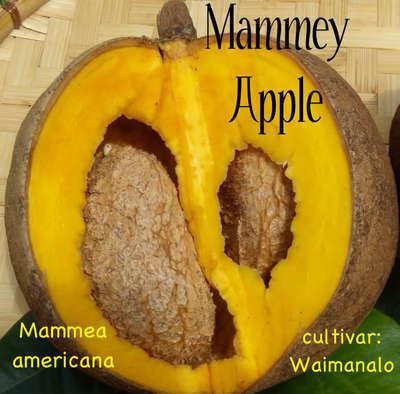
Mammee apples' diameter ranges from 10 cm (3.9 in) to 20 cm (7.9 in). When unripe, the fruit is hard and heavy, but its flesh slightly softens when fully ripe. Beneath the skin, there is a white, dry membrane, whose taste is astringent, that adheres to the flesh. The flesh is orange or yellow, not fibrous, and can have various textures (crispy or juicy, firm or tender). Generally, the flesh smell is pleasant and appetizing.
Small fruits contain a single seed, while larger ones might have up to four. The seeds are brown, rough, oval and around 6 cm (2.4 in) long. The juice of the seed leaves an indelible stain.
Propagation
Propagation can be done by seed. Germination takes place from 60–260 days. Grafting is the preferred method of propagation.
Distribution and habitat
The tree comes from tropical South America. In 1529, it was included by Oviedo in his Review of the Fruits of the New World. It was then introduced to various regions in the Old World: West Africa, particularly Sierra Leone, Zanzibar, Southeast Asia and Hawaii. In the United States, the species is uniquely found in Hawaii and Florida. In the latter state, mammee apples were probably introduced from the Bahamas.
The mammea apple tree is confined to tropical or subtropical climates. In Central America, the species is found to grow up to an altitude of 1,000 m. It thrives best in rich, deep and well-drained soil, but is very adaptive; it also grows on limestone in Jamaica, in the oolithic limestone of the Bahamas, and on ancient coral bedrock in Barbados as well as coral cays off the coast of Florida.
The tree is very sensitive to low temperatures, but seems remarkably resistant to pests and diseases.
Traditional medicine
In traditional medicines of Central and South America, powdered mammey seeds are used against parasitic skin diseases. Ground seeds are stirred into hot water to obtain an anthelmintic infusion. In Trinidad & Tobago, the grated seeds are mixed with rum or coconut oil to treat head lice and chiggers.
Underripe fruits are rich in pectin, and the tree bark is high in tannin.
Culinary interest
Though edible, this fruit has received little attention worldwide.
The raw flesh can be served in fruit salads, or with wine, sugar or cream, especially in Jamaica. In the Bahamas, the flesh is first put in salted water to remove its bitterness, before cooking it with much sugar to make a sort of jam. The flesh can also be consumed stewed.
In the French West Indies, an aromatic liqueur, Eau de Créole, or Crème de Créole, is distilled from the mammee flowers. This liqueur is believed to be tonic or digestive.
In El Salvador, a mamey-flavoured carbonated drink called kolashanpan is considered by most the national soda.
Other
Various parts of the tree contain insecticidal substances, especially the seed kernel. In Puerto Rico, mammee leaves are wrapped around young tomato plants to keep mole crickets and cutworms away. In a similar way, the bark gum is melted with fat in Jamaica and Mexico, then applied to feet to repel chiggers or fleas on animals. The same effect is also obtained from infusions of half-ripe fruits.
In the Virgin Islands, the tannin from the bark is used to tan leather. The mammee timber is heavy and hard, yet easy to work; it has received, however, only limited commercial interest.
